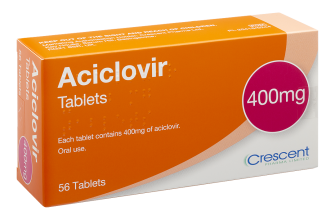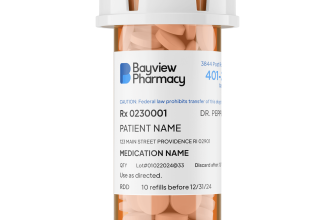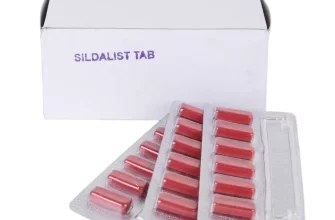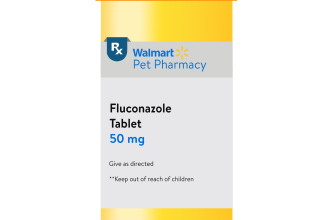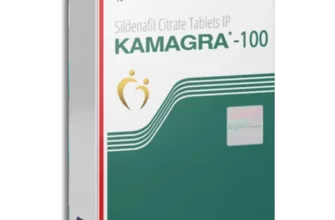If you’re looking to obtain Neurontin, it’s crucial to ensure your prescription is valid and properly documented. A written prescription photo can serve as a reliable reference for dosage and administration guidelines. Always keep your prescription close at hand to avoid any confusion regarding the medication’s usage.
Before taking Neurontin, consult your healthcare provider to discuss your medical history and any potential interactions with other medications. This step is vital for your safety and will help you understand the expected benefits and any possible side effects. A written prescription will clarify the recommended dose and schedule, ensuring you stay on track with your treatment plan.
When storing or sharing your prescription photo, consider privacy and security. Keep a digital copy on a secure device and avoid sharing it on public platforms. This precaution helps protect sensitive information while allowing you to access essential details when needed. Always prioritize your health and make informed decisions regarding your treatment.
Neurontin Written Prescription Photo
For obtaining Neurontin, ensure you have a proper prescription from a licensed healthcare provider. This prescription should be clear and include your name, the drug name (Gabapentin), dosage, and instructions on how to take it. It’s advisable to consult with your doctor about the specific reasons you need this medication, such as managing nerve pain or seizure disorders.
When storing your written prescription, keep it in a safe location to avoid loss or damage. Use your smartphone to take a clear photo of the prescription for easy access when visiting a pharmacy. This is particularly handy in case you misplace the physical copy or if your pharmacy requires a digital version.
Sharing prescription photos online can be risky. Maintain privacy and only share such images with trusted professionals or for legitimate purposes. Be cautious of the platform you select for sharing, as security features may vary greatly.
When you arrive at the pharmacy, you can present either the physical or digital copy of your prescription. Pharmacists will verify the prescription before dispensing Neurontin. If you have questions about the medication, ask the pharmacist to clarify dosage or potential side effects.
Monitor your medication use closely. If you experience any adverse effects after starting Neurontin, contact your healthcare provider immediately. Regular follow-ups with your doctor can help ensure that the treatment remains suitable for your condition.
Understanding the Legal Aspects of Prescribing Neurontin
Prescribing Neurontin (gabapentin) requires awareness of specific legal guidelines to ensure compliance and safeguard patient health.
- Controlled Substance Classification: Check the scheduling of gabapentin in your jurisdiction. Some states classify it as a controlled substance due to abuse potential.
- Prescription Requirements: Follow state laws for written prescriptions, particularly if it’s classified as a controlled substance. Include necessary elements such as patient information, dosage, and refills.
- Patient Evaluation: Conduct a thorough assessment before prescribing. Document medical history and justify the need for gabapentin based on clinical evidence.
- Informed Consent: Provide clear information about risks and benefits. Ensure the patient understands potential side effects and drug interactions.
- Monitoring Compliance: Use drug monitoring programs to track prescriptions. This helps prevent misuse and ensures patient safety.
- Documentation: Maintain detailed records of evaluations, prescriptions, and patient interactions. This protects against legal challenges and supports continuity of care.
Review jurisdiction-specific regulations regularly, as changes can occur. Engaging with professional organizations can enhance understanding of best practices in prescribing gabapentin.
How to Safely Store and Share Prescription Photos
Use secure cloud storage solutions like Google Drive or Dropbox to store prescription photos. These platforms offer encryption and options for sharing with specific individuals only. Always enable two-factor authentication for added security.
When sharing prescription photos, opt for secure messaging apps such as Signal or WhatsApp. These applications use end-to-end encryption, ensuring that only the sender and recipient can view the contents of the message.
Avoid sharing prescription photos on public platforms or social media. This can expose sensitive information, including your name, medication, and possibly other personal data. Always keep such documents private.
Before taking a photo of your prescription, ensure the background is plain and there are no additional personal items in the frame. This minimizes the risk of unintentionally sharing more than just the prescription.
Regularly review your stored photos and delete any that are no longer necessary. This reduces clutter and the risk of exposure if your account is compromised. Follow this practice for both physical and digital copies.
Consider watermarking photos with your name or a unique identifier if you need to share them with multiple parties. This can discourage unauthorized use while still providing recipients with the needed information.
Educate yourself on data privacy laws applicable in your region, such as HIPAA in the U.S. These regulations help you understand your rights regarding sensitive health information.
Common Mistakes to Avoid with Neurontin Prescription Photos
Always ensure the prescription photo is clear and legible. Blurry or cropped images can lead to misinterpretation by pharmacists, resulting in potential medication errors.
Check for proper lighting when taking the photo. Dim or uneven lighting can obscure vital details, such as your doctor’s signature or the medication dosage.
Avoid including any personal information besides what is necessary for the prescription. This reduces the risk of identity theft and keeps your information secure.
Make sure the photo captures the entire prescription, including any special instructions. Missing parts of the prescription can lead to confusion about how to take the medication correctly.
Keep multiple copies in a secure location. Losing the original might lead to complications, especially if it’s needed for insurance claims or refills.
Don’t forget to check the prescription expiry date. Using outdated prescriptions can pose risks to your health and complicate interactions with pharmacies.
Consult with your healthcare provider if you encounter issues with the prescription photograph. They can provide guidance and potentially issue a new prescription if necessary.



